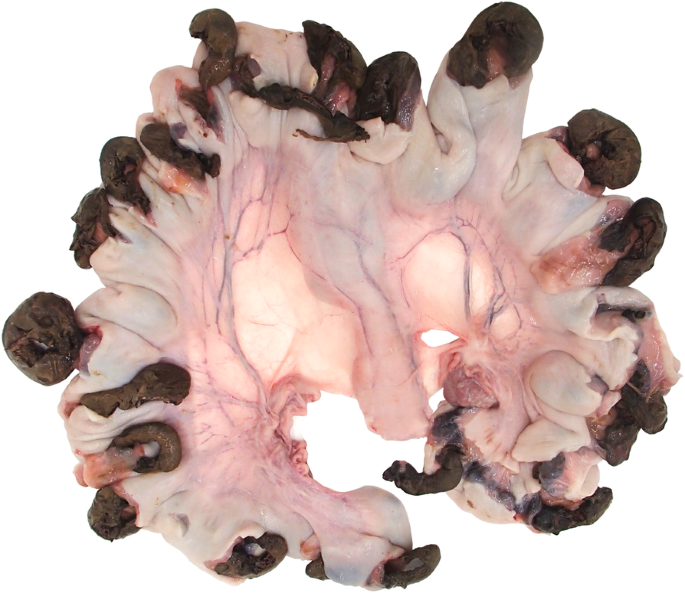
PPV is not outwardly noticeably when we observe our pigs from day-to-day and whilst we know what is going on from the outside how can we know what is going on, on the inside.
PPV affects our in-pig sows and gilts, it is a virus that infects and destroys the embryo and the foetus.
It was called “still birth mummification embryonic death and infertility (SMEDI) and was a very common virus but now we see that PPV is now a rare occurrence due to effective vaccines.
What are the signs
Signs will vary given the stage at which the sow/gilt is pregnant. The infection can come about through various channels, mainly via the uterus at the time of serving whereby the signs will be a total loss of the embryos therefore seeing the sow/gilt returning (hogging/brimming/in season). If the infection is contracted later on in pregnancy the virus will still destroy some of the embryos. Research indicates that if less than 4 embryos are present when the embryos have secured themselves, pregnancy will terminate.
As the foetus forms and the infection ensues, it is at this stage it will result in the termination of all the foetus at which the re-absorption process will commence resulting in mummified births.
During this process their will be no visible outward signs of infection from the sow or gilt as PPV is a disease of the uterus and embryo/foetus.
As the virus takes hold within the uterus it will spread to all the piglets resulting in a farrowing consisting of a vast amount of mummified pigs. As the infected piglets are born they will, at this stage, show no deformities and will be presented still born. Do remember that from time-to-time we do experience piglets being born dead as this is not to be confused with a slow or ailing farrowing.
To witness your sow/gilt to abort is not a sign of PPV.
PPV Behaviour
To diagnose your breeding sow/gilt the following behaviour will be noticed.
- Repeatedly hogging every 3 weeks
- Unusal hogging pattern say every 4 – 5 weeks
- Mummified piglets at various growth stages
- Still births
Prevention
Sadly, once an outbreak has started there is nothing that can be done to stop it. To control and prevent PPV is to ensure a good vaccination programme ensuring the optimum health of your pigs. Vaccines are highly effective. Speak to your veterinary practice to seek advice and guidance.
Consider vaccinating gilts prior to service using the appropriate regime and provide booster doses as recommended by your veterinary practice.
Boars
Boars do not suffer any clinical signs or semen damage from PPV infection. However, they can become infected, and the virus can be excreted in semen for a short period of time, potentially infecting gilts.
For this reason, some veterinarians advise 6 monthly vaccination of boars and such procedures are common practice in AI studs.
The chosen vaccine currently used is a combi vaccine called Ery/Parvo. Please seek guidance from your veterinary practice.
